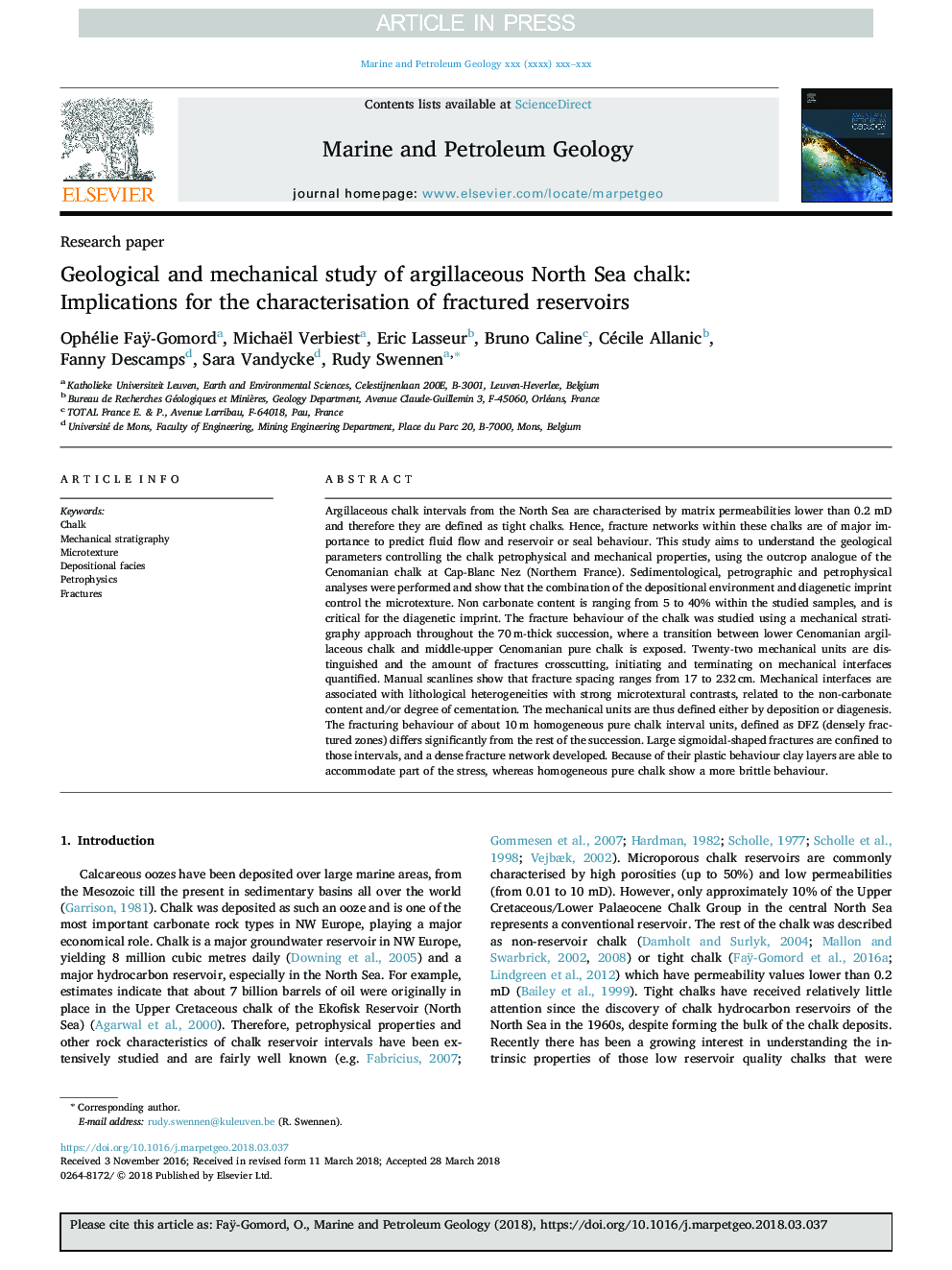| Article ID | Journal | Published Year | Pages | File Type |
|---|---|---|---|---|
| 8909197 | Marine and Petroleum Geology | 2018 | 17 Pages |
Abstract
Argillaceous chalk intervals from the North Sea are characterised by matrix permeabilities lower than 0.2 mD and therefore they are defined as tight chalks. Hence, fracture networks within these chalks are of major importance to predict fluid flow and reservoir or seal behaviour. This study aims to understand the geological parameters controlling the chalk petrophysical and mechanical properties, using the outcrop analogue of the Cenomanian chalk at Cap-Blanc Nez (Northern France). Sedimentological, petrographic and petrophysical analyses were performed and show that the combination of the depositional environment and diagenetic imprint control the microtexture. Non carbonate content is ranging from 5 to 40% within the studied samples, and is critical for the diagenetic imprint. The fracture behaviour of the chalk was studied using a mechanical stratigraphy approach throughout the 70â¯m-thick succession, where a transition between lower Cenomanian argillaceous chalk and middle-upper Cenomanian pure chalk is exposed. Twenty-two mechanical units are distinguished and the amount of fractures crosscutting, initiating and terminating on mechanical interfaces quantified. Manual scanlines show that fracture spacing ranges from 17 to 232â¯cm. Mechanical interfaces are associated with lithological heterogeneities with strong microtextural contrasts, related to the non-carbonate content and/or degree of cementation. The mechanical units are thus defined either by deposition or diagenesis. The fracturing behaviour of about 10â¯m homogeneous pure chalk interval units, defined as DFZ (densely fractured zones) differs significantly from the rest of the succession. Large sigmoidal-shaped fractures are confined to those intervals, and a dense fracture network developed. Because of their plastic behaviour clay layers are able to accommodate part of the stress, whereas homogeneous pure chalk show a more brittle behaviour.
Related Topics
Physical Sciences and Engineering
Earth and Planetary Sciences
Economic Geology
Authors
Ophélie Faÿ-Gomord, Michaël Verbiest, Eric Lasseur, Bruno Caline, Cécile Allanic, Fanny Descamps, Sara Vandycke, Rudy Swennen,
